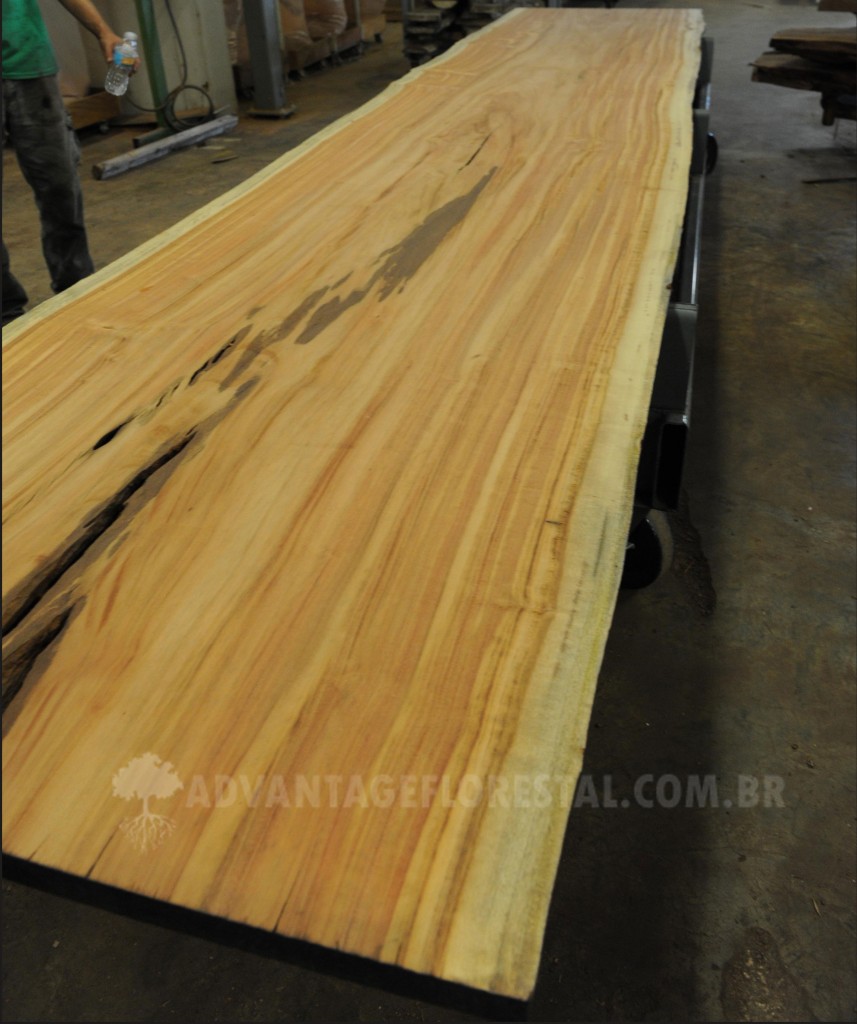
Tigerwood wood slabs – FSC® Certified is also available

For a long time all that Tigerwood was known much better throughout the world as Goncalo Alves or Muiracatiara. The wood has become a staple internationally as a unique wood that provides a very distinct look. Wood lovers understand that every single piece of wood is a one-of-a-kind and no species of wood shows that better than Tigerwood. Displaying its stripes as a slab is absolutely stunning. If the base color is wanted many slabs show up as only the base orang-ish hues of brown without all the wild streaking. Unlike any other wood out there, Tigerwood truly does come in many flavors. Here are 2 reasons why we like to use your tigerwood for creating wood slabs instead of only cutting it into lumber. Slabs have the highest yield of any form and using the most wood is imperative to sustainable harvest A slab that comes from a lesser quality log will be prone to be slightly less stable. Not many companies have thought of leaving Muiracatiara in slab form because of its high value as decking. We believe that offering some of our Goncalo Alves in the highest possible yield is imperative to keep our wholesalers competitive in an ever changing wood world. Our experience with Tigerwood means you can always be assured that we will supply you the very best. Give us a call or email us to see what we have available or what we are expecting to be available shortly. We can export our tigerwood slabs and lumber worldwide, direct from our FSC certified wholesale mill in Brazil.
Common Name: |
Goncalo Alves, Tigerwood, Jobillo |
Botanical Name: |
Astronium spp. (A. graveolens and A. fraxinifolium) |
Indigenous to: |
From Mexico southward to Brazil |
Modulus of Rupture: |
16,970 lbf/in2 (117.0 MPa) |
Shrinkage: |
Radial: 4.2%, Tangential: 7.8%, Volumetric: 11.2%, T/R Ratio: 1.9 |
How is it dried: |
kiln-dried (KD) |
Is it dried quickly: |
Normal Drying Schedule is applicable to thickness lower or equal to 38 mm. It must be used in compliance with the code of practice. For thickness from 38 to 75 mm, the air relative humidity should be increased by 5 % at each step. For thickness over 75 mm, a 10 % increase should be considered |
Stability: |
Info coming soon |
Exterior Wood Recommendation: |
Class 4 – in ground or fresh water contact |
Fastening Method: |
Nailing / screwing: good but pre-drilling is necessary Gluing: poor not recommended without proper oily wood procedures |
Ecosystem impact: |
This wood species is not listed in the CITES Appendices or on the IUCN Red List of Threatened Species. |
Toxicity and allergic reactions: |
Although severe reactions are quite uncommon, Goncalo Alves has been reported as a sensitizer. Usually most common reactions simply include eye and skin irritation. |
Odor: |
No distinguishable odor |
Product we manufacture using this species: |
Decking, hardwood flooring, dimensional lumber, E4E, S4S, RS (Rough Sawn), deck tiles, and wood slabs |
Other common uses: |
Cabinetwork (high class furniture)Sliced veneer
Flooring Wood-ware Turned goods Exterior joinery Interior joinery Interior panelling Heavy carpentry Musical instruments Tool handles (resilient woods) Sculpture |
Susceptibility to |
|
Dry Wood borers: |
Durable – sapwood demarcated (risk limited to sapwood) |
Fungi: |
Class 1 – very durable |
Termites: |
Class D – durable |
Treatability: |
Class 4 – not permeableAgainst dry wood borer attacks: does not require any preservative treatment In case of risk of temporary humidification: does not require any preservative treatment In case of risk of permanent humidification: does not require any preservative treatment |
Janka Hardness: |
|
More Product Information